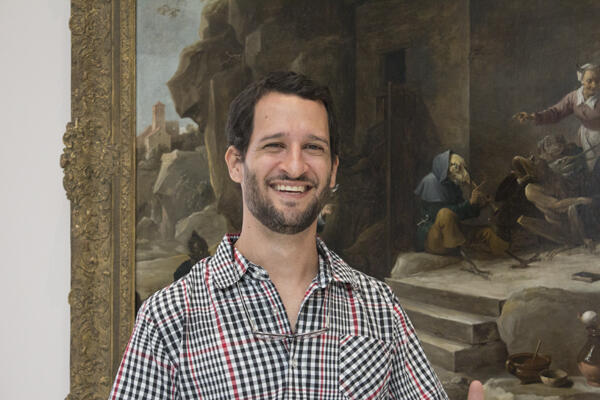_Art in Response: Jorge Díaz Torres_ at the Museo de Arte de Ponce, Puerto Rico
Museo de Arte de Ponce inaugurated the installation of contemporary art titled Art in Response: Jorge Díaz Torres, open until May 27, 2013. This exhibition reflects the museum’s institutional goals of catering to a wide range of interests and enabling audiences to have a common space to meet, discover new horizons, and begin new dialogues.

Coordinated by associate curator María Arlette de la Serna, Art in Response is a program that invites contemporary artists to choose an art piece, or a period represented in the Museo de Arte de Ponce’s European collection as inspiration for their composition, to serve as a counterpoint to the original work.
“With programs such as Art in Response, the Museo de Arte de Ponce functions as a forum for dialogue between traditional and contemporary creation. The first invited artist for this initiative, Luis Camnitzer, had a very successful exhibition. This time we’ve invited young Puerto Rican artist Jorge Díaz Torres, who’s contemporary sculptures will immediately pique the public’s curiosity and create a unique dialogue with the collection and the architecture of the museum itself, the Edward Durell Stone building,” explained María Arlette de la Serna.
The works by Díaz Torres reminds us of the experimental spirit of Marcel Duchamp, with key aspects such as the use of mundane materials and the exploration of the relation between art and life. His pieces reflect the overrated value placed on objects in a materialistic society, in harmony with Auguste Rodin’s innovative practices (inspired by tradition, but rebellious in its idealized forms) and Duchamp’s truly innovative artistic reevaluation of ordinary objects.
An essential part of the development of modern art is the evolution of sculpture that took place throughout the late 19th and early 20th century. In Art in Response, Díaz Torres portrays in his sculptures, urban elements outside their contexts. He repositions them in a controlled environment, thereby creating awareness of things that ordinarily go unnoticed. The artist also plays with the perception of reality and uses his sculptures to stimulate emotions and invite the spectator to look at objects in new ways.
-
 en la galería que sirvió de inspiración.
en la galería que sirvió de inspiración. -
 (1974), City Rock, 2010, papel maché, cerámica, plexiglás, uretano y pintura en aerosol.
(1974), City Rock, 2010, papel maché, cerámica, plexiglás, uretano y pintura en aerosol.
-
 (1974), Vecino, 2012, papel maché, pvc, tela, acero galvanizado, matte-board Crédito en inglés: Jorge Díaz Torres (1974), Vecino, 2012, papier-mâche, matte-board, PVC, fabric, galvanized steel
(1974), Vecino, 2012, papel maché, pvc, tela, acero galvanizado, matte-board Crédito en inglés: Jorge Díaz Torres (1974), Vecino, 2012, papier-mâche, matte-board, PVC, fabric, galvanized steel




